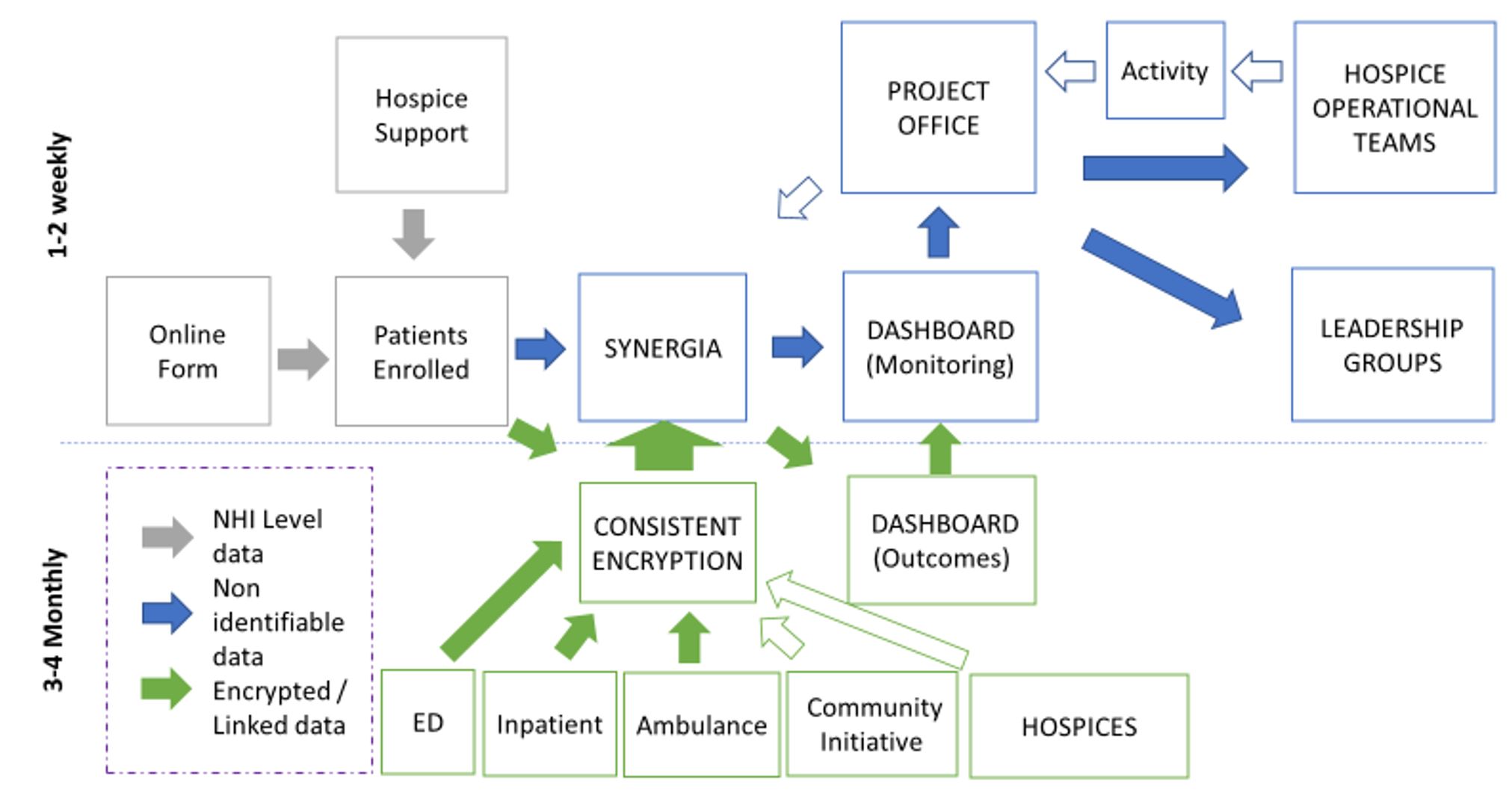Providing timely analytics to a working group that has implemented a new palliative care initiative in primary care.
- Client
- Hospices Of Auckland
- Skills
- Co-design, analytics, system design
The task was to regularly take data from an online form, labelling patients for the first time in primary care as palliative, and to provide the meaningful information from it to the key decision makers and funders in Auckland.

This involved defining the important variables to consistently report to the group(s) and then displaying them in a logical and intuitive way.
It was also crucial to provide interpretation of the trends of each variable, with the data being updated fortnightly this allowed improvements to be made relatively quickly as problems arose.
The variables delivered fell into four categories; Demographics, Facility Type, Clinical condition and Timing. These categories gave the steering group a 360-degree view of the programme, and the data was used by both the working group who had received funding for and had overall governance, and also the clinicians on the ground who were implementing the programme.
Synergia also led the creation of the Clinical Quality Indicators for the programme, which involved convening a cross-sector group of clinicians to agree on the domains and create sensible indicators.
The domains used were Individual & Family, System and Population, which aligned with the business case for the programme, with eight sub-domains and thirteen indicators all of which could be analysed for consistency and equity.
The Clinical Quality Indicators provided the working group with the programmes’ impact on the system (both the intended and unintended consequences), as well as never before seen utilisation rates in palliative care, including death. This was achieved through matching the NHI of the patients enrolled in the new programme with the datasets from the hospital, community, ambulance and Ministry of Health.
The mode of information transfer chosen was an excel dashboard, which allowed easy updates during the first quarter of the programme, based on user feedback. This flexible off-line approach still allowed secure sharing of the key information with all stakeholders, especially funders.
A regular short report was written for the project office which conveyed the key insights to the working group, and excerpts from this were used in communication with the Ministry Of Health.

